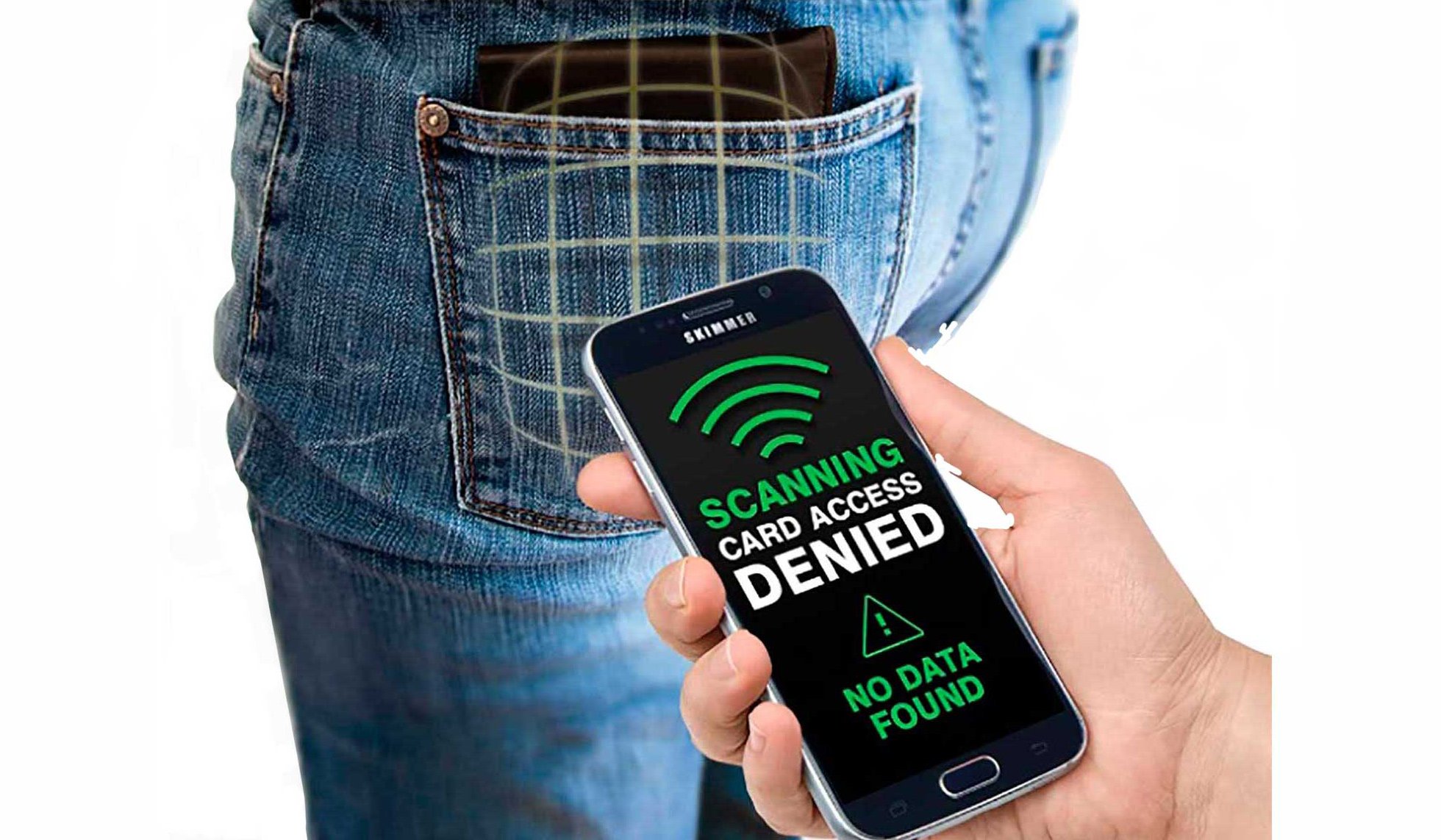What is an RFID Shielded Wallet and can you make your own?

RFID technology is becoming increasingly common, especially in retail situations. RFID stands for “Radio Frequency Identification”, and it is used with credit cards, passports, driver's licenses, retail store anti-theft systems, and even on trains and large shipping containers. As with most things, however, the more convenient something is, the higher the risk of misuse. More specifically for most of us, RFID-enabled credit and debit cards can be skimmed by hackers. This is where RFID-blocking wallets come in. In this blog, I’ll briefly discuss what RFID-blocking wallets are, how you could theoretically make your own, and how to protect your wallet from being scanned by hackers.
What is an RFID Blocking Wallet?
An RFID-blocking wallet is a wallet that is designed to prevent RFID signals from being transmitted to and then read by an RFID scanning device. These wallets contain a special material, usually metal or a conductive fabric, that blocks the radio waves used to transmit information between devices. I’ve written other blogs that cover this in more detail if you are interested.
What are the different kinds of Blocking available?
There are a few different types of RFID blocking wallets available on the market. The most common type is a wallet that has a special metal mesh lining or layer of material that blocks RFID signals. These wallets look and function like regular wallets, but they provide an added layer of protection against credit card fraud. Unless you cut it open, you would never know that there is a blocking material inside.
The other common type of RFID blocking wallet is a metal cardholder or metal money clip. These wallets are small and compact and appeal to those who carry fewer credit cards. They fact that they are made out of metal automatically makes them RFID shielded because radio waves can’t go through metal.
Finally, there are also RFID blocking sleeves. These sleeves are thin covers that slip over credit cards made out of a material that blocks radio waves. They are a great option for those who want to protect their cards but don't want to invest in a new wallet or cardholder. The U.S. Government sends Passport Cards in these sleeves and recommends that people keep their passport card in the sleeve to prevent scanning of their passport while traveling.

Can you make your own RFID Blocking wallet?
I’ve been asked by people if it is possible to make your own RFID blocking wallet. It is! The results aren’t as pretty as a wallet that has RFID built in, but it is possible.
To make a homemade RFID blocking wallet, simply cut a piece of aluminum foil to the same size as the wallet or cardholder. Place the aluminum foil inside the wallet or cardholder, and then cover it with clear tape to hold it in place. This will create a barrier that blocks RFID signals from being transmitted to and from the credit cards. Unfortunately, this also makes it extremely difficult to actually use the credit card. You could also line your wallet with aluminum foil.

Although this DIY RFID blocking wallet can work, it clearly will not be as durable, long-lasting, or aesthetically pleasing as commercially available RFID blocking wallet. Additionally, if the aluminum foil becomes damaged or ripped, it may no longer provide adequate protection against RFID skimming. You could also acquire two pieces of metal that are the exact size of your credit cards and sandwich your cards between them, but all of your cards would need to be between them, and this of course would add to the bulk of your wallet.
It's really much, much easier and recommended that you just use a wallet that was designed to be RFID blocking.
How to protect your wallet from being scanned by hackers...
In addition to using an RFID blocking wallet, you should also be aware of how you are using your credit cards. I’ve witnessed people take out their credit card while waiting in line at the bank, ATM, or the grocery store. Once you remove your card from your protective wallet, it can be scanned. If you were a hacker, wouldn’t you go stand in line exactly where other people were taking out their cards?
It is important to be aware of your surroundings when using your wallet or credit cards. In the military we called this “Situational Awareness.” When making a purchase or accessing an ATM, be aware of anyone who may be standing too close or acting suspiciously. Additionally, avoid using public Wi-Fi networks when accessing sensitive information, such as banking websites or credit card accounts. In the future I’ll write a blog on how easy it is to grab other people’s information while they are connected to a public hotspot like in a coffee shop. Go ahead and surf the web if you like, but don’t make any purchases unless you are on a private network.
The Smart Choice!
RFID blocking wallets are a smart investment and a great step in protecting your personal information and finances. An RFID blocking wallet doesn’t cost any more than a non-RFID blocking wallet and is just as stylish with just as many options. If you can have security, and it isn’t obvious, and it doesn’t cost more, why wouldn’t you?
Want to know what an RFID shielded wallet looks like? You can check ours out here. You’ll see that you really can’t tell that there is anything special about them, but the hackers that try to scan your cards will know right away!
